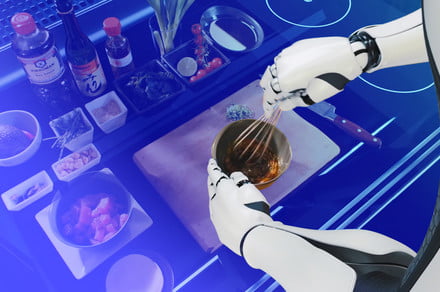The cultivation and production of food are what allowed humans to progress from tribes of hunters/gatherers to be able to develop settlements and cities. Planting, growing, harvesting, and preparing food is the basis of our modern civilizations. Now our abilities to do all of these tasks have progressed so far that many of these steps can be done by robots and machines. So what does the future of robotics look like when it intersects with food production? We take a look at the three main areas in which robots are interacting with the process: During the farming stage, during the processing stage, and during the cooking and serving stage.
When it comes to farming and growing our crops, huge advancements in both hardware and software technologies have allowed farmers to use more and more autonomous machines. Companies like John Deere have developed tractors that run without human involvement, using GPS, camera technology, and myriad sensors to help them tend to each individual plant in their field, from planting to fertilizing to harvesting. This allows farmers to get more done with less manpower.
When it comes to food processing, using machines and automated robots is nothing new. Many of us have seen footage on all sorts of food plants where various machines work to process and package everything from fruit to cake. Breakthroughs in technology have allowed autonomous machines to move beyond simple packaging to being able to individually process complex items like removing bones from fish fillets using various sensors and cameras, and then removing the bones with a water jet spray — all in a manner of seconds.
But what about food cooking and serving? Humans still play the biggest role in the preparation and serving of food. Cooking requires a huge amount of nuance, dexterity, and learning, and while robots aren’t quite up to speed with dealing with the complexities of cooking, they are making quite the leap forward. There are machines that can cook omelets, make stir fry, flip burgers, and more, using advanced sensors, cameras, temperature gauges, and machine learning.
The idea in all of this is not to replace human workers but to make the process more efficient and cost-effective. By allowing robots and automated machines to work alongside us at every step of the process can result in making food cheaper, healthier, and more accessible to everyone.

